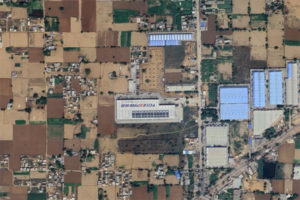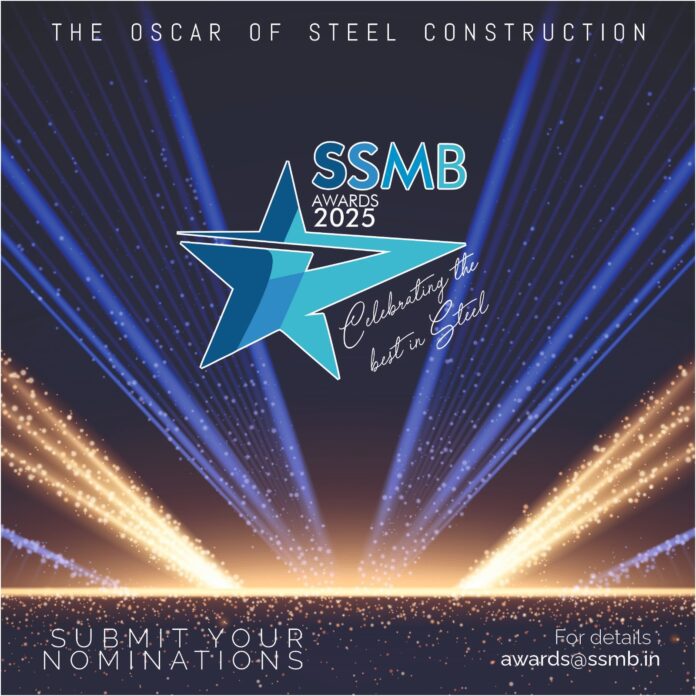
Green building is the practice of creating structures and using processes that are environmentally responsible and resource-efficient throughout a building’s life cycle from siting to design, construction, operation, maintenance, renovation and deconstruction. A ‘green building’ involves the practice of using processes and technologies which are environmentally friendly and energy-efficient. This practice expands and complements the classical building design concerns of economy, utility, durability, and comfort. Green building is also known as sustainable or high-performance building.


Green buildings can reduce energy consumption by 20-30 percent and water usage by 30-50 percent, and significantly reduce waste generation through extensive recycling. The use of green building practices leads to better air quality; enhanced daylight, leading to lower electricity consumption; superior health and overall well-being, and enhanced productivity in the case of commercial buildings.
The vision of the Indian Green Building Council (IGBC) is to enable a sustainable built environment for all and facilitate India to be one of the global leaders in the sustainable built environment by 2025. With 146 certified buildings and spaces, or almost 2.8 million gross square meters, India has been in the third position globally for Leadership in Energy and Environmental Design (LEED) of green buildings in 2021, according to the US Green Building Council’s annual report.
Project Brief
TCI Express, a leading logistics company in India, has commissioned a new state-of-the-art GIGA Sorting Center at Tajnagar, Gurugram, to meet the increasing demand for efficient sorting centers in the northern region of India. The center was designed to be energy-efficient, sustainable and optimized for operational efficiency. Covering a plot size of 6.56 acres with a built-up area of 1.94 lacs sq. ft., the facility is expected to offer clear advantages in terms of operational efficiency, service reliability, higher utilization and shorter turnaround time thus expanding TCI Express’s business operations in the region.


Client Brief
The client wanted a fully automated sorting center that would optimize their operations in the northern region. Located in Tajnagar, Gurugram, they requested a facility that would be energy-efficient, sustainable, and designed to maximize the utilization of natural light. This 24X7 operational building should provide a comfortable working environment for employees. The building should also have low maintenance costs and with all the above-mentioned criteria it should be completed within the agreed timeline.
Initial Thought
The initial thought process that we adopted was to design a building that maximized the intake of natural light and ventilation while minimizing energy consumption. The building was designed with a series of skylights in terms of PC light strips on the roof, which provides natural light, reducing the need for artificial lighting throughout the day. The roof is provided with turbo vents to allow natural ventilation, reducing the need for mechanical ventilation in the warehouse area. The roof was also designed to accommodate solar panels, providing renewable energy and reducing energy costs.
Architectural Features
The infrastructure is well planned to facilitate safe movement for trucks. We tried to achieve optimum use of spaces with the best circulation to maximize the proficiency of land. The warehouse block is provided with 72 docks for streamlining the material entry and exit operations. To ensure the maximum warehouse storage, 7 meters eave height is provided allowing easy access to goods and providing ample space for machinery and equipment.

Choice of Material
For addressing bigger spans and meeting the timeline of the project steel structures were an obvious choice for the construction. It has several advantages over conventional building methods. Steel is a popular building material for industrial structures, primarily due to its strength, durability and cost efficiency including reduced construction time, lower maintenance costs, and improved safety. Steel is also a sustainable material, as it can be recycled and reused, reducing the environmental impact. Designing buildings as future materials for other buildings would drastically reduce construction waste thus an important step towards achieving sustainable development for future generations.
Geometrics
The project comprises of admin block, a main warehouse and a record room block. The main facility has a rectangular footprint with dimensions of 67 meters by 233 meters. The building has a 7 meters eave height and 12 meters ridge height. The roof pitched at a 1:15 slope, provides space for skylights and solar panels. Admin block (G+2) in R.C.C. is planned with the main warehouse block wherein both the blocks are connected at the foundation level and separated in the superstructure. A separate block for the record room is provided to isolate it from warehouse operations
Software Used
Our team used a combination of AutoCAD and SketchUp software for designing and detailing the project. The software allowed us to generate detailed drawings of the facility, optimizing the design and minimizing errors during construction. For designing and analyzing the structure STAAD software was used. The energy model and calculations were generated from E-Quest software.
Project Timeline
The construction started in 2019 and was supposed to be completed in 3 years. Though the project faced challenges due to the Covid-19 pandemic, with construction timelines impacted and a shortage of resources but with the help of the associated team we were able to complete it before the said time including design, detailing, fabrication, and construction. The whole team ensured that the project remained on track, utilizing virtual communication tools and implementing safety measures on the construction site. However, steel-based constructions are always relatively faster and safer to achieve the project timeline.

Green Building
The Project successfully addresses most of the Green Building criteria in terms of energy efficiency. This world class sorting center has received a 5-Star rating from ASSOCHEM and is currently under the process of approval from LEED. It recently won the 5th GEM Award for best Warehouse in International Sustainability Conclave from Mr. Keshav Prasad Mourya, Deputy CM of Uttar Pradesh.
This building is designed to minimize waste generation, reduce energy consumption and encourage recycling. Locally sourced materials were used during the construction which further reduced the construction’s impact on the environment. It works on the zero waste concept. We have also installed low-flow plumbing fixtures and rainwater systems to conserve water. STP plants are being installed which further reduces Water wastage in addition to waste management. Renewable energy technologies, such as solar PV is installed to reduce reliance on fossil fuels.
Overall Experience
The most necessary aspect of smooth construction is an understanding and cooperative clients. Our clients not only allowed us to experiment with unconventional solutions but also insisted on incorporating those in the design. Through a cross-professional understanding, we were able to come up with this award-winning facility based on the client’s requirements.
The team worked closely with the client and the associated consultants throughout the project, ensuring that their needs were met while also minimizing their environmental impact. Throughout the planning and designing of this energy-efficient building, it was a fair share of a learning experience.




